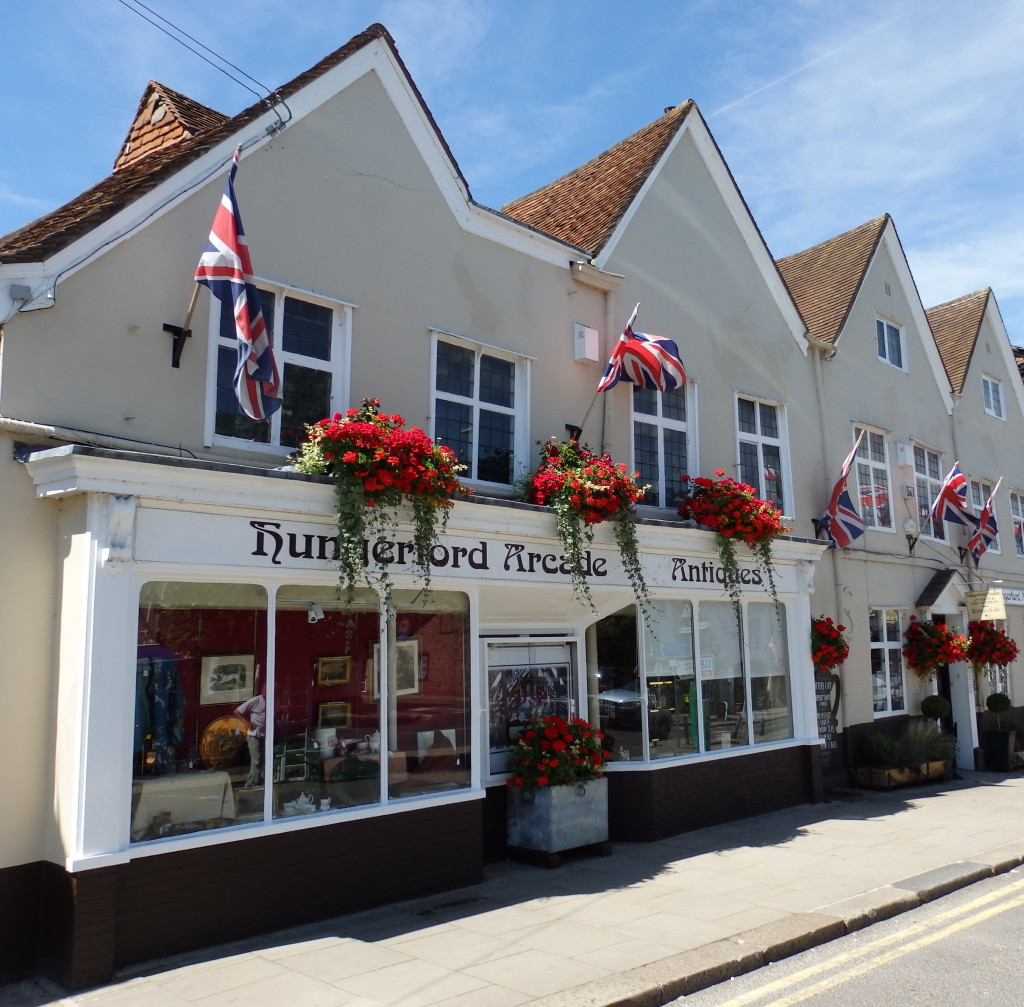This article was written before the Coronavirus lockdown
Hello Again

First of all, please let me apologise for the title of this short article, but it was the best I could do as I sit here waiting for one of the ferries to arrive from the mainland.
I am sitting here in the Gossip Café (highly recommended) drinking my fiftieth cap of coffee with Caron, looking out on to the misty Solent waters. For those of you who know Yarmouth, you will know where I am, as to my right there is Yarmouth Pier (1876) which was built by the South Western Railway Company for paddle steamers.
Since 1951 the pier has been used for excursion boats and the like and I am told it is the last remaining all wooden operational pier in the British Isles. Between 1984 and 1994 the pier was renovated and today is a pleasure to look at.

The pier is almost poetical in its simple majesty.
,
It is strange that thousands of people pass through Yarmouth, but few really stop to look at this beautiful town. I was as guilty as charged until last week when Caron and I visited the Isle of Wight for one of our frequent breaks on the island.

Yarmouth 2020
We had not planned to do so, but on the spur of the moment we decided that it would be quite jolly to have lunch in Yarmouth and explore afterwards and to my surprise, I found that Yarmouth had at least two shops that catered for my interest in antiques and books, but more of that later.
Yarmouth, if my history is correct, was first mentioned in 991 as ERMUD which means the muddy estuary, but the settlement grew in size and by the 12th century it had become the principal port on the island. It was soon granted a Charter which gave its residents certain rights and privileges and freed them from serfdom. The town became a borough in 1439 and in 1440 elected its first mayor.

Yarmouth in 1920
Yarmouth sent a representative to parliament in 1295 and between 1584 and 1832 returned two members.
But not all was plain sailing, for in 1377 our naughty French cousins burnt Yarmouth to the ground and because they got bored again, they did the self same thing in 1543. It was because of the latter raid that Henry the Seventh built Yarmouth Castle which did the trick, as since then the only French invaders that have arrived have been by ferry. And these good people have had only their maps and guidebooks in hand and have not considered arson or any other dreadful ideas.

But what of Yarmouth, well please accept that this not an all singing all dancing guide to this charming town as Caron and I only spent two hours there before going on to Freshwater Bay, which is about twenty minutes away.
Bank House Antiques Emporium is considerably smaller than Hungerford Arcade and is situated only a few hundred yards from the ferry terminal.
If you turn sharp left as soon as you leave the ferry then you will soon find a large and very elegant square with St James’ Church at one end and Yarmouth Pier at the other. The antiques emporium is about two hundred yards from the pier on the right.
As I thought when entering the emporium, there is a definite maritime flavour to the stock so if you are into all things coastal, then this is your place. This said, there are many collectables as well as some beautiful pieces of silver.
I resisted the opportunity to dress up as a sailor and only purchased a jubilee mug dating from 1935 which I shamefully used to drink my herbal teas from as I was on another health kick. The IOW is a great place, but not if you are a Guardian reader vegan or something similar. I knew that I would have to face unhealthy choices during my stay and this began with a lunchtime visit to the Kings Head (I think that was its name) which served burgers to die for.

It was whilst Caron and I were walking our lunch off that I discovered a bookshop in a lane not far from the square. There were some antiquarian books in the window and this is when I switched into yes or no mode. You might ask me what that means and in short, I have found that some bookshops are so pricy that to enter is just to torment yourself.
Recently, I popped into one in South Kensington as it had some incredibly interesting first editions and found that the cheapest was two hundred and twenty five pounds and the less said about the main bookshop in Henley on Thames the better.
As a rule of thumb, I will not pay more than sixty quid for a book unless it is incredibly rare or an object of desire. But as soon as I entered this bookshop, I knew that it was friendly. There were books everywhere both antiquarian and modern and at a dip, the prices were quite fair.
Obviously, I gravitated towards the poetry section which had some fine editions and I soon found a book by Harold Monro (1879-1932) who apart from being a poet himself, founded The Poetry Bookshop which existed between 1913 and 1926 and to some extent, was the British version of Shakespeare and Company in Paris

It is forever associated with the now somewhat forgotten Georgian Poets and noted poets such as Wilfred Owen, Wilfred Wilson Gibson and Robert Frost who hung out there, as well as other names. The tragic poet Charlotte Mew and Ezra Pound (who I think is on the same stage as Eliot) also had strong links with The Poetry Bookshop.
Harold had published Children of Love in 1915 and the edition I found dated from 1920. However, the price was obscure and could have been anything although, I think at a guess it read twenty-five pounds. For some reason, I never barter and I replaced the book and then disappeared into another section.
It was whilst I was away looking at a book about Grace Darling that my lovely wife purchased Harold’s book of poems for me and said that she had agreed a price of eleven pounds for it. The booksellers assistant could not read the price either and said that it might have been twenty-five pounds, but this as was unclear so would eleven pounds be ok?
Although I have a number of copies of books associated with The Poetry Bookshop, this was the first collection of Harold’s poems that I can recall owning.

View from the Albion Hotel
Sadly, we were running out of time as we had promised to book in at The Albion Hotel during the afternoon because we wanted to visit Dimbola before it closed for the day.
Both the bookshop and the antiques emporium were gracious enough to let me photograph their shops and I have included these photographs with this article.

Freshwater Bay
We caught our bus easily and arrived in Freshwater Bay with plenty of time to spare and instead of going to Dimbola, we just watched the violence of the waves before the sheer hostility of the elements drove us indoors.
Freshwater Bay and Yarmouth are very near to each other, but if one looked at the behaviour of the sea, they were miles apart.
The sea at Yarmouth was not smooth but no more than choppy whereas, the sea at Freshwater was wild with waves breaking over the esplanade on occasions and the geography of the beach being seriously disturbed.
This said, the wind violence that Caron and I experienced the following day at Alum Bay was incredible and we found it difficult to maintain our balance, especially when we were facing The Needles. At a guess, these were around 90 mph, (even the bus was swaying) but when we drove through Yarmouth (we were on our way to Ventnor) it was only breezy.
Obviously, it is the location of Yarmouth that dictates this, as Freshwater and Alum Bay are much more exposed, but the lack of extreme weather (as when we were there) gave Yarmouth a calmer feel.
I would have liked to have spent longer in the town as there were lanes and streets that we had not explored which might have contained more interesting and unique shops. Perhaps next time, as when life becomes too frantic on the mainland we tend to drift towards the IOW just to get our thoughts together.
There is something about the island that calms you down and even when you are in the middle, you know that you are on an island.

Victorian Shadows
If you do not choose to drive, then the bus services on the island are second to none and although Dr Beeching murdered the railways in the sixties, we were left with the tube trains that run between Ryde and Shanklin and these are great fun to use.
There is also a preserved railway at Smallbrook Junction which runs during the kinder months.
Like most towns and villages, Yarmouth lost its railway connection many years ago and in a way this isolates it but, because of its geography it is always alive and for most of us, a great place to discover.
Long may it remain so.
Happy Hunting
Stuart & Caron Miller-Osborne














 Hungerford Arcade is renowned for its unusual, quirky items and here is one of them. Stallholder, Ian Spuffard showed me this fantastic tin plate car “Sunday Driver” that is in fantastic condition. His father, who is 81 was given it as a present from his father when he was in his teens.
Hungerford Arcade is renowned for its unusual, quirky items and here is one of them. Stallholder, Ian Spuffard showed me this fantastic tin plate car “Sunday Driver” that is in fantastic condition. His father, who is 81 was given it as a present from his father when he was in his teens.









